

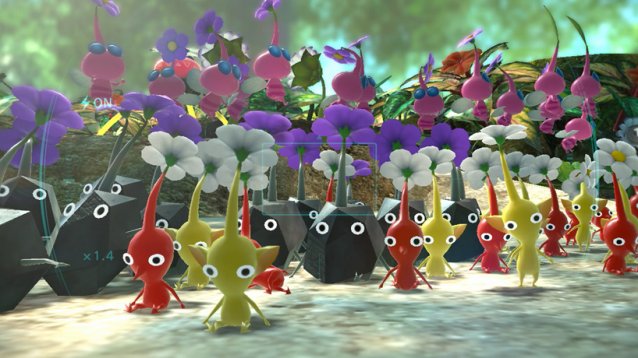
Pikmin is a unique kind of game, a real-time strategy disguised under the cute veneer of a post-apocalyptic Earth that has survived without humanity seen from the point of view of creatures much smaller than we were. Those who played the first and/or second will be happy to know that the series is finally back and that the formula hasn't changed too drastically. Those for whom Pikmin 3 is their first exploration of the Pikmin world will find that the minor improvements make for an easier entry point.
Of course, you can tell just from a glance that Pikmin 3 is a polished version of what came before. Since Pikmin and Pikmin 2 both launched two generations ago, on the GameCube, this sequel is noticeably prettier. The high-definition version of future Earth (or as the protagonists – visitors from the planet Koppai – call it, PNF-404) boasts sparkling water and rustling leaves that throw moving shadows on the ground. The fruit that the Koppaites collect over the course of the game look convincingly juicy, believable despite their alternative names: “face wrinkler” instead of “lemon”, for example.
Another advantage that the Wii U brings to play is its controller. You can play with the Wii Remote and Nunchuk if you want, and that method does allow for easier aim when throwing Pikmin, but you can also play with the GamePad. Aside from the standard controls – one analog stick to move, one to move the camera, and buttons to throw and whistle – the GamePad boasts that second screen, which makes it your real-world version of the “KopPads” that the Koppaites carry around in the game. Icons along the bottom of the screen let you use your GamePad as a map, a database of Pikmin under your command or fruit in your hold or info that you've picked up along the way, or a camera with which to take first-person screenshots. When the Koppaite you're controlling gets a call from another on the team, the GamePad works like a videophone, though the image of the other caller also – superfluously – appears on the television screen.
Of these features, the most useful is the map, which is dark at first but becomes clear as you explore whichever area you've landed in. If you drag your finger across the screen on your GamePad, you'll see a moving top-down view of the area on your television screen, which lets you scope out where you've been, and also send the Koppaites to automatically walk to a chosen destination. This “Go Here” function is especially useful given that Pikmin 3 has three protagonists that you can switch between, setting each to oversee a group of Pikmin carry out a separate but simultaneous task: knocking down a wall, defeating a giant bug, carrying a huge piece of fruit back to the spaceship. The ability to multitask is especially welcome for the fact that it theoretically negates your need to sit and wait while a group of Pikmin patiently carry out a relatively slow task.
Unfortunately, Nintendo has not translated this ability to have three characters in different places doing different things into a cooperative campaign mode. As far as the story goes, you'll have to work through that on your own. But outside of the campaign, you can play cooperatively with one friend in any of the “Mission” modes, which have you collect as many fruit or treasure, or as many defeat enemies, as you can in a given time, in a variety of levels based on those in the story. If you want some competition, “Bingo Battle” is a lot of fun, giving each player a distinct team of Pikmin with which they must collect enough items to form a line on their bingo card, and probably cause problems for the other player along the way.
Pikmin 3 is the kind of game that with its cute characters and mechanics appeals to a younger player – and the inner child of an older gamer – but is difficult enough that it takes the player seriously. The different colours of Pikmin and the environmental challenges that each of those is uniquely faced to place provide the opportunity for strategic play, and the story unfolds over the course of at least a dozen hours if not more. And even once you've played the game again, this time to collect all of the fruit rather than just to reach the end of the narrative, you've still got a worthy collection of other modes to keep you coming back for more.
If you want to check out the first couple of levels of Pikmin 3, you can watch the first two episodes of my "Let's Play"-style diary here (with more to come over the next few days):
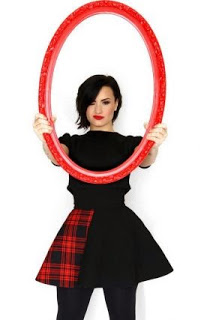

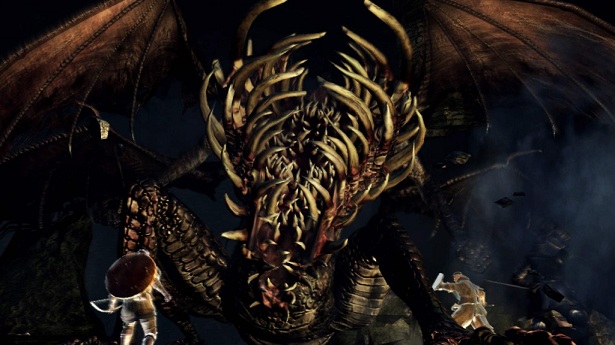
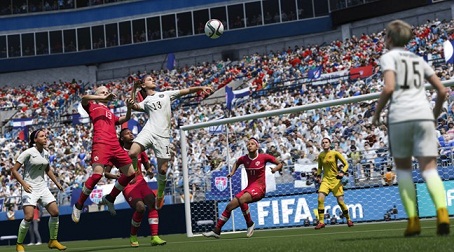
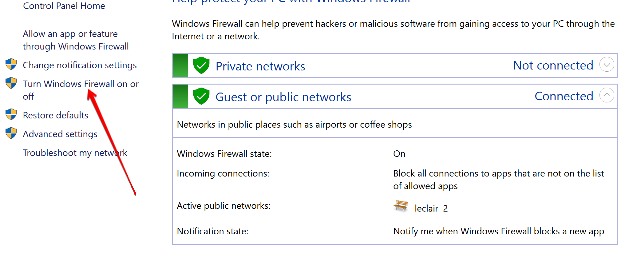 Can't Install Fonts on Windows 10? The Solution Is Beyond Weird
Can't Install Fonts on Windows 10? The Solution Is Beyond Weird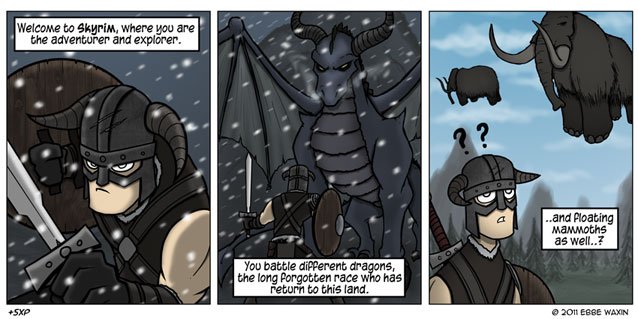 Top 6 Amusing Skyrim Game Fails
Top 6 Amusing Skyrim Game Fails Tomb Raider Treasure Map Locations
Tomb Raider Treasure Map Locations How to connect to the internet on Nintendo device
How to connect to the internet on Nintendo device The Wolf Among Us Episode 5: Cry Wolf: All chapters complete Walkthrough with Alternate endings and system requirements for PC
The Wolf Among Us Episode 5: Cry Wolf: All chapters complete Walkthrough with Alternate endings and system requirements for PC